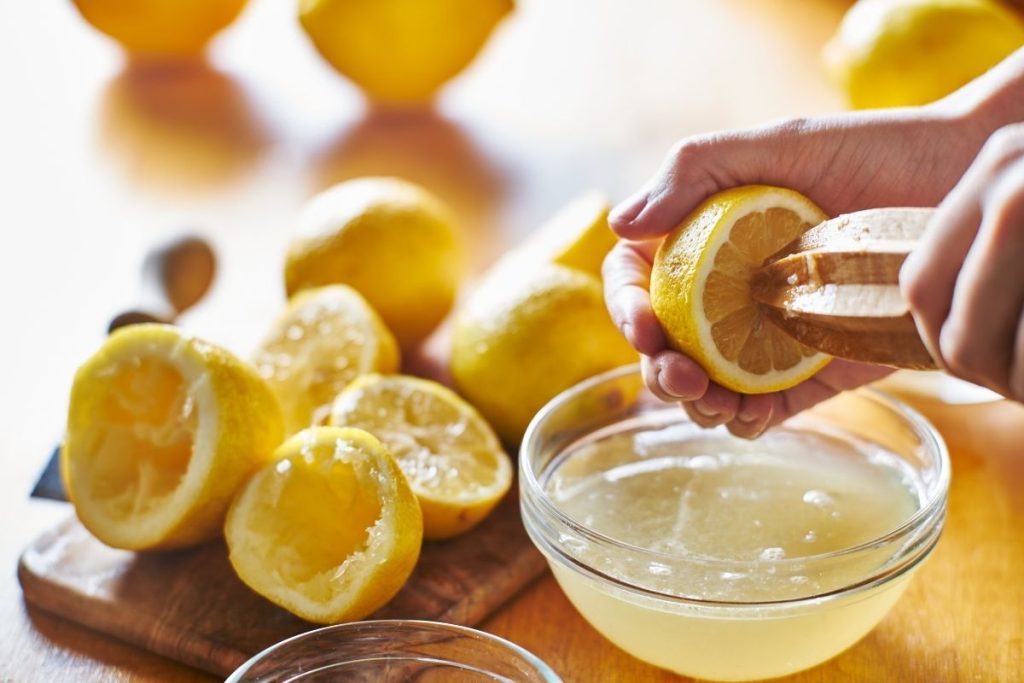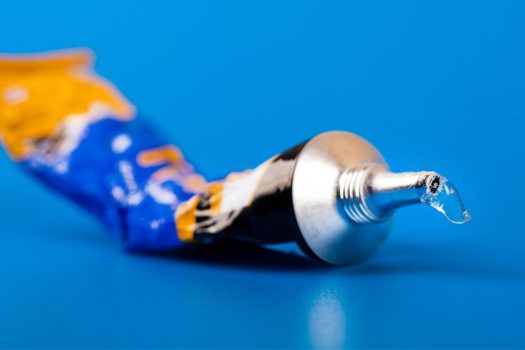Contents
When reassembling a porcelain statue, repairing a broken corner on a coaster, or reattaching the sole of a shoe, super glue is a lifesaver. Crazy glue or superglue is cyanoacrylate, an acrylic resin that bonds to two surfaces when the molecules in the resin react with moisture to form tight chains. The reaction produces heat so that the bond is almost instantaneous.
Fast bonding is great, but it can also mean that glue ends up on surfaces like skin and fabric where it does not belong. It is possible to remove super glue from different surfaces using several products you probably have around the house.
Before You Start
Super glue should first be allowed to dry before it is cleaned off any surface. When it is wet, you cannot wipe it away because it will smear or embed itself deeper into fabrics. After removing glue with any of the methods below, you should wipe the item down and wash your hands well.
When removing super glue from hard surfaces, fabrics, or carpets, always test the cleaning product on an inconspicuous area to ensure that it will not damage the surface further.
Nail Polish Remover Or Acetone
Acetone is commonly used to break the bonds formed by super glue. Acetone is found in most nail polish removers. If you want the best results, choose an acetone-based brand without conditioners. Despite its benefits, acetone can harm some surfaces, such as varnished wood and certain fabrics.
You can remove the glue by soaking a cotton ball or pad with acetone. Ensure the solution does not damage the item’s surface by testing it on an inconspicuous area. Dip the super glue in the acetone. Let it work for a few minutes. Remove excess acetone by wiping it away with a microfiber cloth and rinsing it with plain water. Continue until the glue is removed.
Mineral Spirits
Use For: Skin, Fabric, Hard Surfaces
Petroleum-based mineral spirits, commonly called “white spirit,” are used to thin paint and clean paint brushes. Less toxic than turpentine and paint thinner, use it as you would acetone to break the glue bonds on the skin, fabric, and hard surfaces.
Distilled White Vinegar
Used For: Skin, Fabrics, Wood, Metal, Plastic
Although it is not as effective as acetone, the acidic nature of distilled white vinegar will also break the bonds of super glue. Dab the chosen area with a cotton ball saturated with vinegar. Please leave it to work for a few minutes and then rinse. Use your fingernail or the edge of a credit card as a gentle scraper to help loosen the glue.
Vegetable Oil
Used For: Skin, Hard Surfaces
Any vegetable oil such as corn, coconut, and peanut butter can help loosen super glue from skin and hard surfaces like plastic, countertops, and laminate floors. Spread the oil on the surface and use a plastic scraper to loosen the glue spill. Work slowly and patiently and keep repeating the steps until the glue is entirely removed.
Lemon Juice

Used For: Skin, Wood, Metal, Plastic, Stone
One of the more natural substitutes for acetone is lemon juice. The acid will help cut through the glue bonds. Using an old toothbrush dipped in freshly squeezed lemon juice, you can effectively scrub the area affected with glue. As you clean, the adhesive should begin to flake and can be safely scraped away with a fingernail or plastic edge.
Warm Soapy Water
Used For: Skin, Plastics
Although it may seem obvious, promptly washing your hands in warm soapy water after a gluing incident could be all you need to remove the glue. Using hand lotion after washing will also help to break the remaining glue bonds.
To remove glue from plastic, mix one cup of warm water and one tablespoon of dishwashing detergent. Use a paper towel, dip it into the solution, and wring it until it is damp. Place the towel over the glue stain and cover it with plastic wrap to prevent the towel from drying. Wait four hours, and the moisture and detergent will soften the glue. Finish the process by gently scrubbing with a microfiber cloth and rinsing the glue.
Emery Board
Used For: Skin And Hard Surfaces
An emery board offers gentle abrasion to remove super glue from skin, nails, and hard surfaces like metal and wood. Use a delicate touch to prevent damage to the skin and the original surfaces.
Sandpaper
Used For: Hard Surfaces
After super glue has hardened, it can be removed from hard surfaces like wood, plastic, stone, and metal by using sandpaper. However, the sandpaper can also scratch the original surface. Use painter’s tape to protect clean areas, and also use fine grit paper and delicate touch as you near the original surface.
Paint Scraper
Used For: Hard Surfaces
If none of these methods have worked, it is time to get more aggressive. A metal or plastic paint scraper can remove the glue from hard surfaces. However, there is a chance that the scraper may damage the surface you’re trying to save. Use patience and a gentle touch as you work on the glue.
Safety Razor Scraper
Used For: Glass, Stone, Metal
A safety razor scraper works particularly well on glass items; ensure you hold the blade flat against the surface to loosen the edge of the glue. Work slowly, so you don’t gouge or damage the surface of metal items or countertops.
Final Thoughts
If you ever have an issue with super glue in the future, now you know which article to visit! No matter your problem regarding the glue, there will be a method on this list to dispose of the glue from any surface effectively.
Remember to let the glue dry before attempting to remove it and ensure you gently apply yourself to the material to avoid any scratches on the surface.







